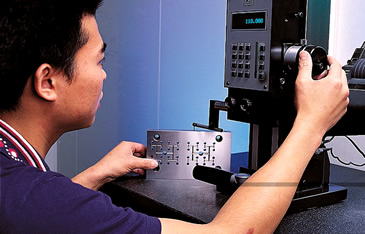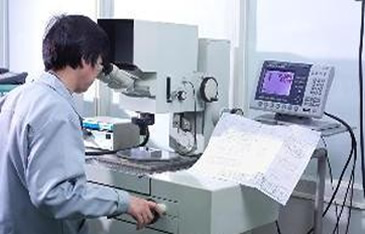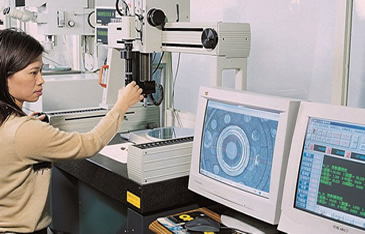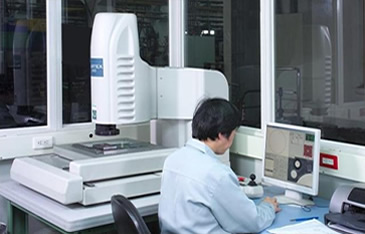Quality Assurance

-

ELECTRIC ALTIMETER
-

AUS TWO-COORDINATE MEASURING MICROSCOPE
0.0001 mm -

KCMM COORDINATE MEASURING SOFTWARE
0.002 mm -

METROLOGY SOFTWARE FOR AUTOMATED MEASURING MACHINES
0.001 mm
Quality control in plastic injection molding is a critical process that ensures the manufactured parts meet the required specifications and standards. Here's a detailed overview of quality control measures in plastic injection molding:
- Material Inspection and Handling:
- Raw material inspection: Incoming polymer resins or other materials undergo inspection to verify their quality, including properties such as viscosity, melt flow index, moisture content, and color consistency.
- Proper material handling: Careful storage and handling of materials to prevent contamination or degradation, which can affect part quality.
- Machine Setup and Calibration:
- Calibration of injection molding machines: Ensuring that machine parameters such as temperature, pressure, injection speed, and cycle time are set correctly for the specific material and part requirements.
- Verification of machine condition: Regular maintenance checks and calibration of machine components to ensure proper functioning and accuracy.
- Process Monitoring and Control:
- Real-time monitoring: Continuous monitoring of key process parameters during the molding process, including melt temperature, mold temperature, injection pressure, cooling time, and cycle time.
- Automated control systems: Utilizing automated systems to control process parameters and adjust settings to maintain consistency and meet quality standards.
- Mold Design and Maintenance:
- Mold design review: Ensuring that mold designs meet part specifications and quality requirements, including considerations for part geometry, gating, cooling system design, and material flow.
- Mold maintenance: Regular inspection and maintenance of molds to prevent defects such as wear, corrosion, or buildup of contaminants that could affect part quality.
- Quality Inspection and Testing:
- In-process inspection: Conducting visual inspections and dimensional checks during production to identify defects such as flash, sink marks, warping, or surface imperfections.
- Final inspection: Comprehensive inspection of finished parts to verify dimensional accuracy, surface finish, and other critical features using calibrated measuring tools and inspection equipment.
- Testing for mechanical properties: Performing tests such as tensile strength, impact resistance, and hardness to verify material properties and ensure parts meet performance requirements.
- Non-destructive testing: Utilizing methods such as ultrasonic testing or X-ray inspection to detect internal defects without damaging the parts.
- Statistical Process Control (SPC):
- Data collection and analysis: Collecting data from the molding process and analyzing it using statistical techniques to monitor process variation, identify trends, and make data-driven decisions for process improvement.
- Control charting: Using control charts to visualize process variation and set control limits, allowing operators to quickly identify deviations from the norm and take corrective action.
- Documentation and Traceability:
- Record keeping: Maintaining detailed records of process parameters, inspection results, material traceability, and production batches for traceability and quality assurance purposes.
- Traceability systems: Implementing systems to trace parts back to their production batches and raw material sources, facilitating recalls, troubleshooting, and continuous improvement efforts.
By implementing robust quality control measures throughout the plastic injection molding process, manufacturers can consistently produce high-quality parts that meet customer requirements, regulatory standards, and industry best practices. Continuous monitoring, proactive maintenance, and data-driven decision-making are essential elements of a successful quality control program in plastic injection molding.
